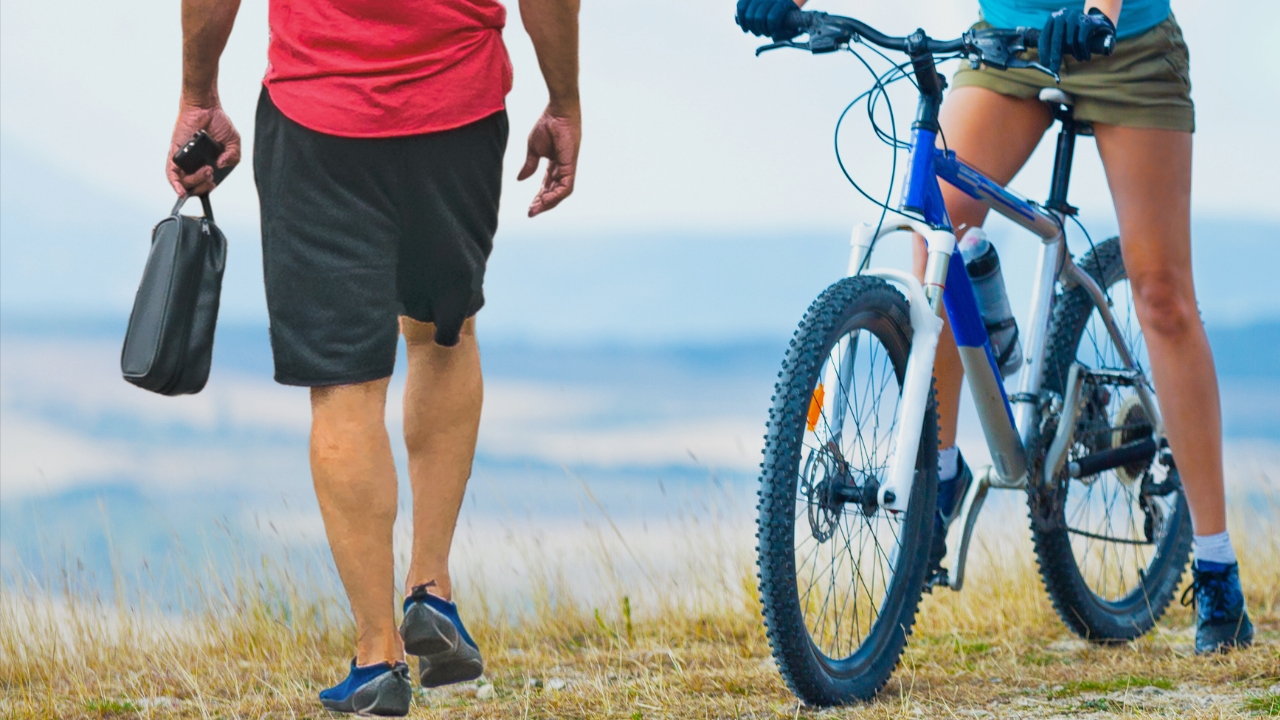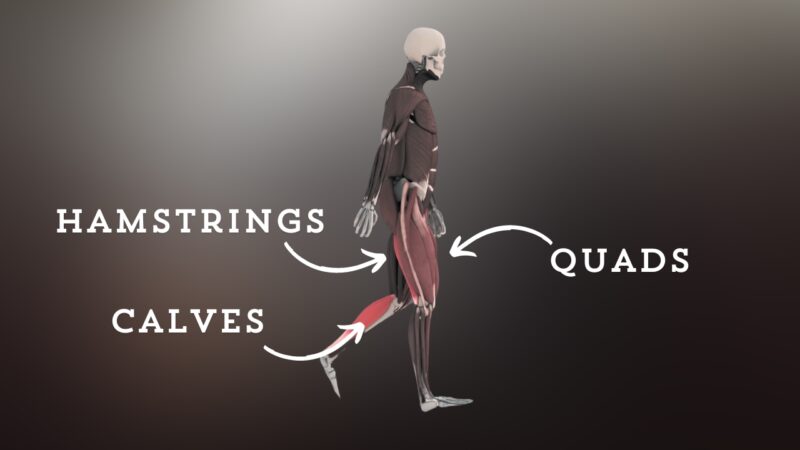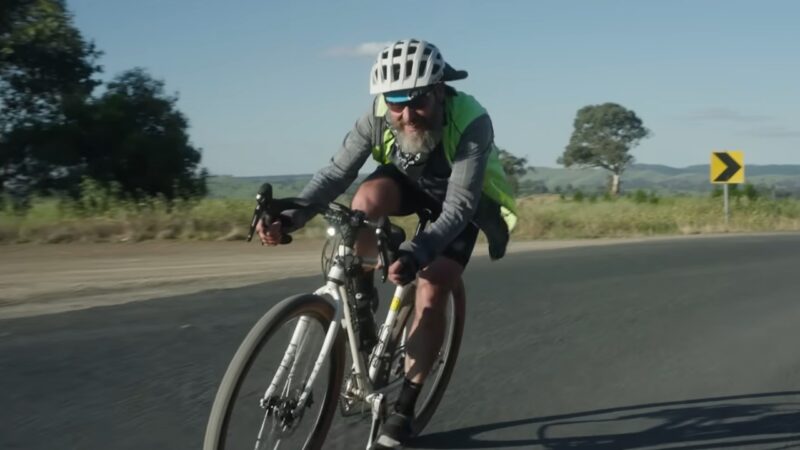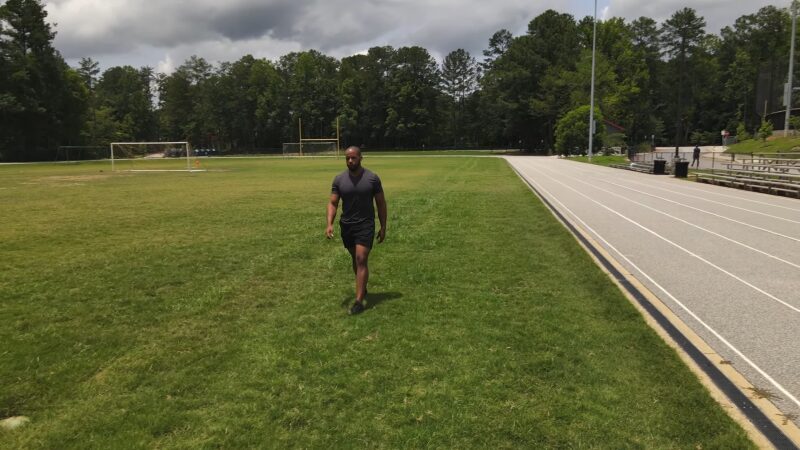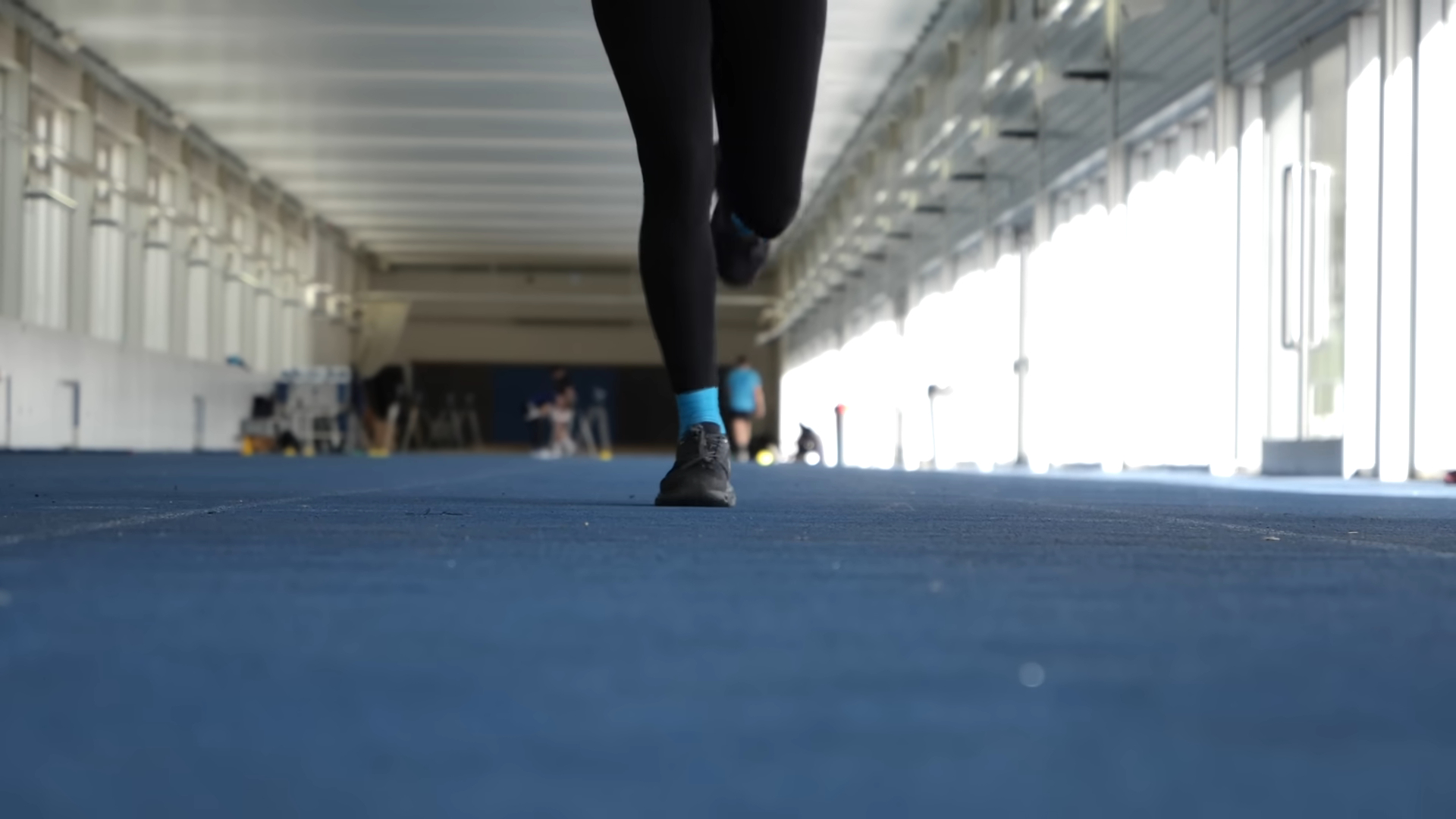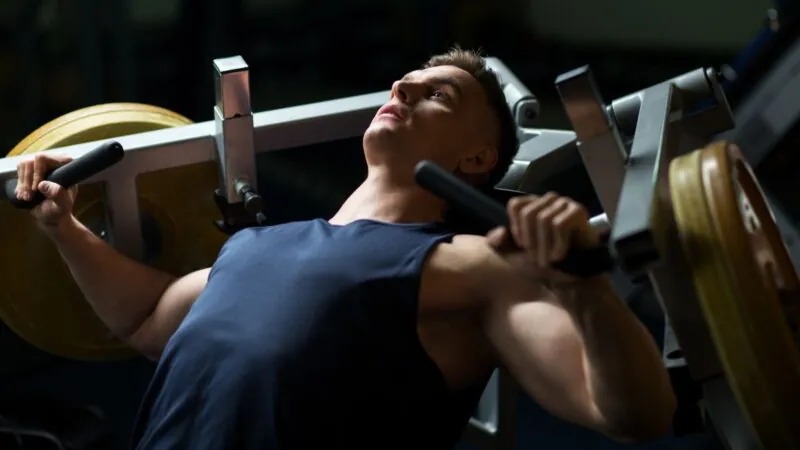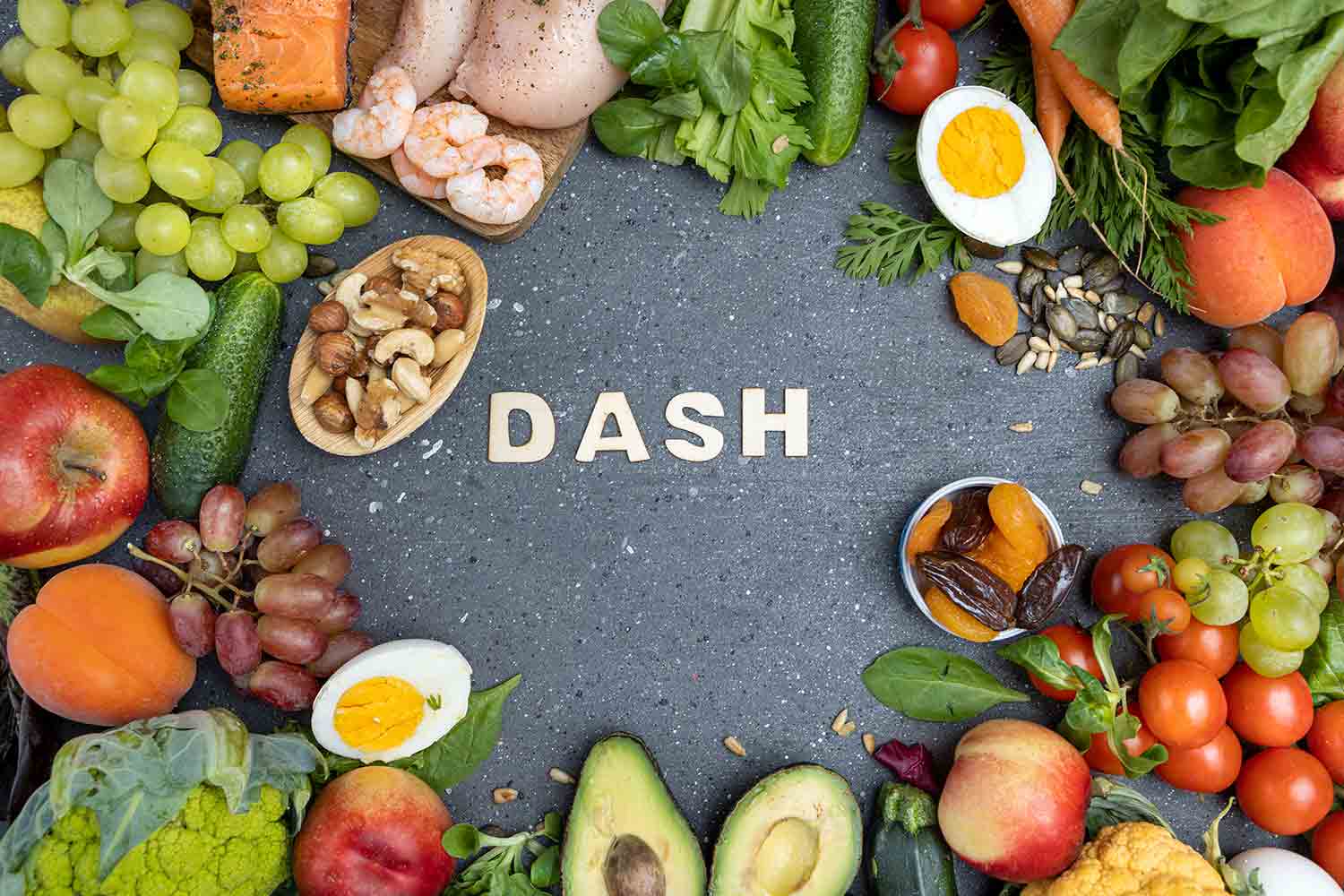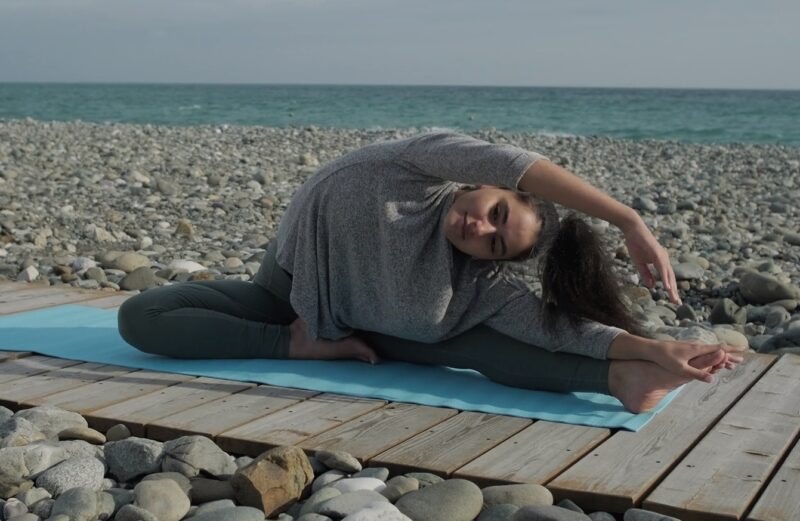One morning, I was like, “Should I bike or just go for a walk?” So, I jumped on my bike, zooming around, feeling super alive, and thinking, “Man, this is awesome.”
The next day, I decided to chill and go for a walk instead, really taking in the vibes around me. That’s when it hit me – why not do both?
Biking gets my heart racing, and walking is my chill pill.
Mixing it up turned out to be my sweet spot. No need to pick sides when you can have the best of both worlds, right?
Which One Is Better for Belly Fat Loss?
When it comes to staying active, both cycling and walking offer great ways to burn calories. But how much you’ll burn can depend a lot on how intensely you’re doing these activities.
For someone who weighs around 150 pounds, here’s an idea according to Compendium of Physical Activities (1, 2) of what a 30-minute bout of either cycling or walking might look like in terms of calorie expenditure:
| Activity Intensity | Cycling (Calories Burned/Speed) | Walking (Calories Burned/Speed) |
|---|---|---|
| Light | 240 calories — Speed: 10-11.9 mph (16-19.15 km/h) | 154 calories — Speed: 3.5 mph (5.6 km/h) |
| Moderate | 285 calories — Speed: 12-13.9 mph (19.3-22.4 km/h) | 179 calories — Speed: 4.0 mph (6.4 km/h) |
| High | 357 calories — Speed: 14-15.9 mph (22.5-25.6 km/h) | 250 calories — Speed: 4.5 mph (7.2 km/h) |
Todd Astorino says that, when you compare the calories burned across similar levels of effort over the same duration, cycling generally comes out on top. Imagine intensity as how hard you feel you’re pushing yourself, a concept often referred to as the rate of perceived exertion [3].
So, if your schedule is tight and you’re looking to get the most calorie burn for your time, you might want to consider hopping on a bike. Cycling offers a more efficient way to maximize calorie expenditure in a shorter amount of time.
What Muscles Are Used?
| Muscles Used When Biking | Muscles Used When Walking |
|---|---|
| Quads | Quads |
| Glutes | Glutes |
| Hamstrings | Hamstrings |
| Calves | Calves |
| Triceps | Hip adductors |
| Abdominals | Abdominals |
| Latissimus dorsi (the lats) | Shoulder muscles (if carrying small weights) |
When you’re cycling, your lower body gets an incredible workout. Your quads and glutes are the show’s stars, powering every pedal stroke. And it’s not just those; your hamstrings help keep your knees stable, while your calves support your ankles.
Ever noticed how cyclists have impressively muscular legs? That’s your clue right there. If that’s the look you’re going for, biking’s your ticket. But the workout doesn’t stop with your legs.
Balancing on a bike means your core muscles, including your abs and back, get in on the action to keep you upright. Your triceps and lats also get a workout, supporting your upper body as you ride.
Walking’s a bit different. It mainly works your quads, hamstrings, and calves, but not in the intense, all-encompassing way cycling does. Your hip adductors, glutes, and abs do their part too, helping you stride forward and keep your core stable.
However, if you’re walking and hoping to sculpt your arms, you might be waiting a while unless you’re power walking with some gusto. Tossing in some hand weights can help bring those arm muscles into the equation.
So, while walking might not give you the same muscular definition as cycling, especially in the legs, it’s still a great way to stay active. But if you’re dreaming of those cyclist’s legs, you know which path to pedal down.
What Exercise Builds You More Strength?
Cycling seems to have the upper hand.
Hayao Ozaki says that it has been shown that hopping on a bike can actually make you stronger, and interestingly, this boost in muscle power and size is even more pronounced in older folks. However, don’t count the younger crowd out just yet—they can still reap the strength benefits of cycling, but they might need to push themselves a bit harder. [4]
So in summary of this Cycling seems to have the edge over walking when it comes to building strength, but we’re still waiting on more studies to really seal the deal.
As for walking, the verdict’s still a bit fuzzy, especially for younger, healthy individuals.
There’s not a ton of research out there, but one study did highlight that older people who were more on the sedentary side found themselves getting stronger after they started incorporating walks into their routine.
What Should Choose Those With Injuries?
Injuries can really set you back, making it tough to stay active. It’s crucial to find a suitable exercise that you can continue despite being injured, although the best option often depends on the specific injury.
For example, cyclists often report low back pain due to long periods of riding in a hunched position. On the other hand, walking has been shown to help reduce pain, disability, and activity avoidance in people with chronic low back pain.
Both walking and cycling have been found to help manage pain associated with knee osteoarthritis, so they can be good choices for those dealing with joint pain from arthritis. However, if your joint pain stems from different causes, you might prefer one activity over the other.
A recent study of Carla Vanti found that for people suffering from chronic low back pain, walking helped to reduce pain, decrease disability, and lessen the avoidance of activities.[5]
So if you deal with some sort of pain try walking!
It’s a good idea to consult with a healthcare professional, such as a family doctor, before starting any new exercise regimen if you have injuries or other health concerns. They can guide you towards the best exercise choice for your specific needs.
Who Should Choose What?
Cycling is great if you’re looking to burn off more calories and boost the strength in your lower body. Meanwhile, walking could be your go-to for improving bone density and it’s generally less expensive compared to cycling.
Cycling
Pros
- Great for those with limited exercise time, offering quick calorie burn.
- Increases lower-body strength significantly.
- Suitable for individuals who enjoy a fast-paced workout.
Cons
- Might not be enjoyable for everyone, especially if you dislike the sitting position or have back pain.
- Requires investment in a bike and possibly additional gear.
Walking
Pros
- Ideal for individuals with bone density issues or back pain.
- No need for significant financial investment—just a pair of walking shoes.
- Accessible and easy to start for most people.
Cons
- Burns fewer calories than cycling at comparable intensity levels.
- Some types of pain might be exacerbated by the weight-bearing nature of walking.
Verdict
So, which is better for losing belly fat: walking or cycling? The answer is not straightforward. Both walking and cycling can help you create a calorie deficit, which is key for fat loss.
Going on a weight loss journey? Expert answers suggest that cycling typically burns more calories per hour than walking and can therefore result in faster fat loss, but only if you can sustain it for longer periods.
REFERENCES:
- Compendium of Physical Activities. (2011). 01 – Bicycling.https://sites.google.com/site/compendiumofphysicalactivities/Activity-Categories/bicycling
- Compendium of Physical Activities. (2011). 17 – Walking. https://sites.google.com/site/compendiumofphysicalactivities/Activity-Categories/walking
-
King L, Sillers W, McCarthy K, Louis P, Astorino TA. Higher fat oxidation during treadmill walking versus cycle ergometry in active women at equal RPE: a pilot study. J Sports Med Phys Fitness. 2016 Nov;56(11):1298-1303. Epub 2015 Sep 1. PMID: 26329837.
-
Ozaki H, Loenneke JP, Thiebaud RS, Abe T. Cycle training induces muscle hypertrophy and strength gain: strategies and mechanisms. Acta Physiol Hung. 2015 Mar;102(1):1-22. doi: 10.1556/APhysiol.102.2015.1.1. PMID: 25804386.
-
Vanti C, Andreatta S, Borghi S, Guccione AA, Pillastrini P, Bertozzi L. The effectiveness of walking versus exercise on pain and function in chronic low back pain: a systematic review and meta-analysis of randomized trials. Disabil Rehabil. 2019 Mar;41(6):622-632. doi: 10.1080/09638288.2017.1410730. Epub 2017 Dec 5. PMID: 29207885.

